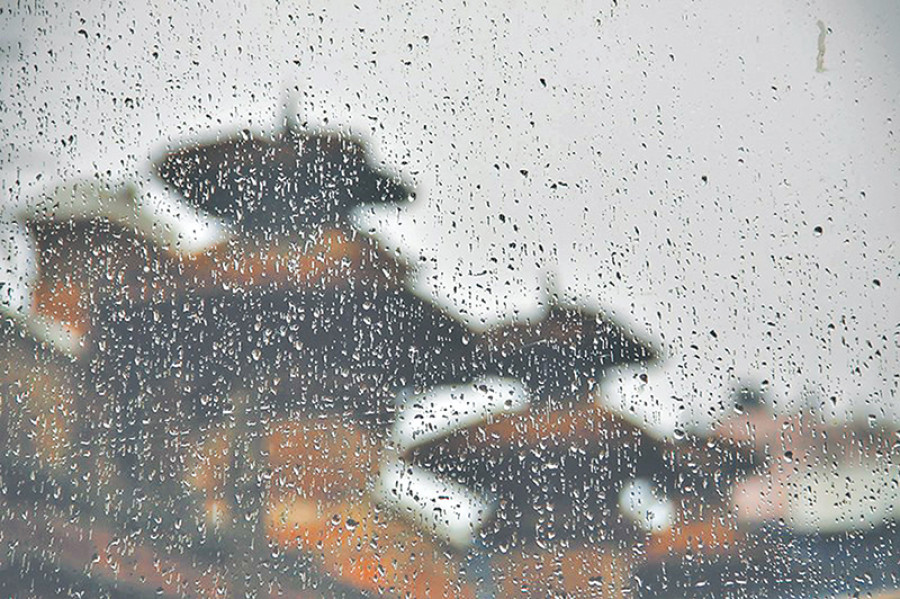Entertainment
Walking through the ages
Amidst the ongoing outcries about the neglect or destruction of several heritage sites in the Capital and beyond, a new initiative is attempting to educate the younger generation on what is at stake if heritage sites get eviscerated.
Sandesh Ghimire
Amidst the ongoing outcries about the neglect or destruction of several heritage sites in the Capital and beyond, a new initiative is attempting to educate the younger generation on what is at stake if heritage sites get eviscerated. As part of the initiative, weekly heritage walks are being organised in several parts of the Valley as to rekindle ties that have been severed by rapid urbanisation and a change in lifestyle over the past decades. I partook in one such session (organised by Volunteer for Change-Nepal) where Alok Tuladhar, a cultural documentarian and one of the leading voices for the Save Heritage campaign, along with Jason Shah, a cultural enthusiast, who leads heritage walks through several communal and religious spaces in inner Patan on Saturday. The intention of the walk, in Tuladhar’s own words, “is to make the younger generation curious about heritage so that the value of heritage sites becomes common knowledge.”
“A historical artifact becomes a heritage when there is a sense of belonging,” Jason Shah began by answering what heritage meant, “For centuries, this sense of ownership came because these spaces were intrinsically tied to everyday life.” For instance, as Tuladhar pointed out, the oldest known Hiti (stone sprout) in Kathmandu Valley, which was constructed in 570 CE, still sprouts clear drinking water during the monsoon season. “A shroud of mystery hangs over the inner workings of the underground canals that bring water to the sprouts, but by removing the conduit, the mouth of the sprout, it can be seen that natural elements such as pebbles, sand, coal and baked clay are used to filter the water,” Tuladhar said, “The fact that some sprouts have been functioning for over a 1000 years shows that they are sustainable, but that does not mean that don’t require maintenance—to keep the interest level alive, religious and cultural motifs were attached to these places and objects of everyday use.”
For instance, intricate religious carvings on stone could be seen on every sprout that we went to, and there were Chaityas in several of Patan’s Hitis. Chaityas, Shah explained, are three dimensional forms of Thangka paintings, and the ancient city of Patan was built in the image of a Thangka. “The existence of textual descriptions and paintings, along with physical structures helped sustain the cultural life in the Valley,” Shah said.
Throughout the walk, Shah and Tuladhar explained religious imagery but also offered practical explanations to why certain idols and artifacts were kept in their respective places. For example, it
was new information to learn that Shiva Lingas always face north, helping travelers of yore to navigate the city better.
“But today, because the religious fervour is fast fading away, the best approach to heritage preservation is to understand the scientific and mathematical rigor that went into constructing the old settlements,” Tuladhar said, “The knowledge we have access to can help us better plan our cities—we need to focus on indigenous knowledge that has accumulated over the centuries. But for over a century now, rampant modernisation has threatened the existence of heritage sites.”
Prime minister Bir Shumsher, Tuladhar informed, had installed metallic pipes to distribute water to several parts of the city. Those pipes, however, corroded and became unusable in less than a century. “Now that water from Melamchi is making its way into the city, we need to ask how sustainable it will be,” he said the participants.
A major take away from the walk for many attendees was that heritage conservation is not in opposition to western knowledge; rather it is a call to actively incorporate native knowledge in developing and carving Nepal’s space in a globalised world. “Aside from the rich cultural and philosophical influence that heritage exerts in our collective memory, I was drawn to cultural documentation because of the scientific and mathematical configuration of these places,” Tuladhar explained.




 18.12°C Kathmandu
18.12°C Kathmandu










